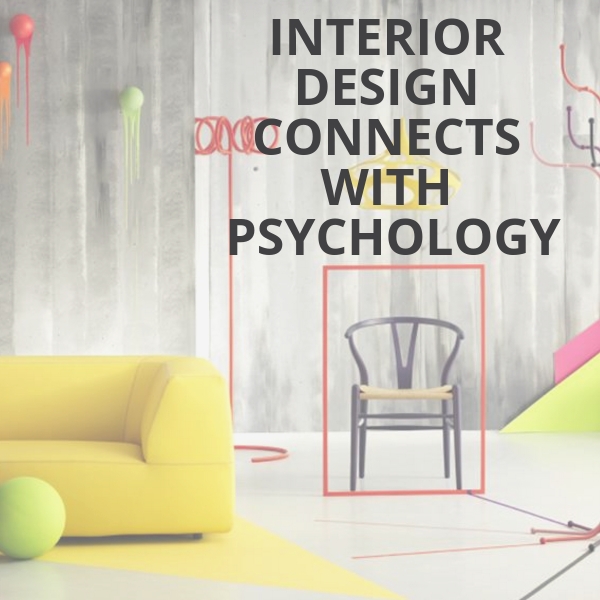INTERIOR DESIGN CONNECTS WITH PSYCHOLOGY
October 15,2018

Interior design psychology is a field within environmental psychology, which concerns the environmental conditions of the interior. It is a direct study of the relationship between an environment and how that environment affects the behavior of its inhabitants, with the aim of maximizing the positive effects of this relationship. Through interior design psychology the performance and efficiency of the space and the wellbeing of the individual are improved
By incorporating this psychology into design, one can control an environment and to an extent, the relationship and behavior of its inhabitants.
Interiors should be designed with humans in mind, who understand space at an intrinsic level as a savannah. The ground should be darkest, like a path, whereas the mid-range, eye-level colors should be neutral, and the ceiling should be light, like the sky. “Humans feel most comfortable in spaces that follow nature, instead of monochromatic bubbles.”
An area that’s not always taken into consideration is the psychological effect of interior design on your subconscious. Believe it or not, the choices that you make when deciding how your home will look have a documented effect on your emotions and perceptions. The color of the walls in your kitchen might be contributing to your anxiety and your brand of couch could lead others to assume that you’re standoffish.
It’s no surprise that color is a main component of how we experience the world around us. But, what may be surprising to some is the fact that that the colors in our environment have a definitive effect on or moods and emotions. As you begin to conceptualize your home’s interior design, make sure that you are using colors in ways that fit with the tone you want to create in the space.
As you go shopping for items to fill your rooms, make sure that your interiors are giving off the impression you want.
Make sure your entranceway is clean, colorful, and welcoming. Arrange all of your furniture to allow you to clearly see the room’s doorway and appear inviting to guests. Decorate with natural elements like flowers and stones. Be sure to keep your home in good condition and free of clutter.
The way that the interior design in your home looks is only one small facet of its impact. Behind the colors that you choose for your walls and the way that you arrange your furniture, there is an additional layer of meaning. Every design choice that you make has a distinct psychological impact on your subconscious. Let us help you create a space that’s equally pleasing to your body and mind.
This is particularly important in the design of schools, hospitals, residential communities for the elderly and other projects where people are under high levels of stress. Although this may seem obvious to a psychologist, I realized that the needs of users are often neglected by architects and designers, who tend to focus instead on the form and materials of a building.
When you walk through the space you just don’t see the color of the room and what furniture layout in that room. It’s actually more complicated. you see the room biologically.
Your five senses actually feel the room. The light of the room, the smell of the room, the sound you can hear around the room the feeling of touch when you touch the object.
Your brain is experiencing all of the above while you enter in the room.
Your brain is actually translating all of the information from your senses secreting chemicals based on that experience
A simple example is the color Red.
Red is very invigorating color. So, when you see the color Red it released the brain chemical called Doberman, oxytocin, endorphins. These hormones make you more socially excited.
If you select Green or Blue.
The colors are cool and relaxing. so, when you see these colors your brain releases serotonin which makes you feel relaxed.
That’s why most of them health care places use blue or green to make people feel more calm and relaxed.
Is the same way when some space has very tall ceiling it makes you think higher positive.
When a space has more natural light coming you feel more energetic. In your space if you can’t create proportional light you don’t feel energetic. that’s how light it is so important for the space.
By understanding the relationship between in biology and design we are able manipulate color and space create a place that not only looks great, but it feels mind blowing.



Sikha Das
nice
Anit
Very Good Article
Subhradeep Das
good